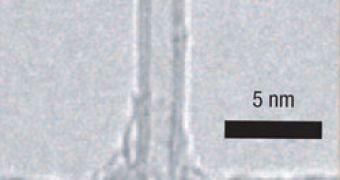Materials built from double-walled carbon nanotubes (DWNTs) have unique properties derived from the combination of features from single-walled nanotubes (SWNTs) and multi-walled nanotubes (MWNTs). Transparent conductors, for instance, are best fit for solar energy cells or flat displays, and as the need for these increases on the global market, so does the need for DWNTs. But there was a difficult problem with sorting them apart from SWNTs and MWNTs after the manufacture process, as the latter types were also inherently produced.
Researchers from the Northwestern University in Evanston and Chicago, Illinois, US, led by Alexander A. Green, a graduate student in materials science and engineering, came up with a method that manages to overcome the obstacles of size, numbers and manipulation. The technique seems as complex as its name: density gradient ultracentrifugation. This method is based on the exploitation of the properties of the tiny tubes, such as size and density, and uses a large centrifuge to tell them apart.
"Nanomaterials possess the unique attribute that their properties depend on physical dimensions such as diameter," explained the senior author of the research, Mark C. Hersam, professor of materials science and engineering at Northwestern's McCormick School of Engineering and Applied Science, and professor of chemistry in the Weinberg College of Arts and Sciences, as cited by PhysOrg.
"This size dependence implies, however, that the physical dimensions must be exquisitely controlled in order to realize uniform and reproducible performance in devices. Our study directly addresses this issue for double-walled carbon nanotubes, an emerging nanomaterial with applications in information technology, biotechnology and alternative energy," added Hersam.
The nanotubes are coated with soap-like surfactant molecules and then subjected to tens of thousands of rotations every minute within an ultracentrifuge. Their diameters and electronic structures allows for their separation due to the effect on their buoyant density, as DWNTs were discovered to be about 44% longer than SWNTs. This leads to a 2.4 times better electrical conductivity in transparent conductors, which are better fit for obtaining enhanced spatial resolution and scanning lifetimes, as well as improved field-effect transistors, biosensing and medicine administration.

 14 DAY TRIAL //
14 DAY TRIAL //